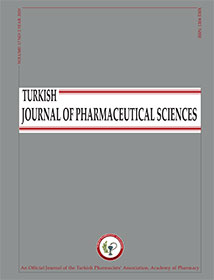
The Turkish Journal of Pharmaceutical Sciences
Yazarlar: Mohammad Reza NAZER Sareh JAHANBAKHSH Katrin EBRAHIMI Massumeh NIAZI Maryam SEPAHVAND Mehrdad KHATAMI Sam KHARAZI
Konular:-
Anahtar Kelimeler:Herbal medicines,In vitro,Leishmania tropica,Macrophage,Promastigote
Özet: Objectives: Cutaneous leishmania sis (CL) is considered as one of the most critical infections worldwide, in which the protozoa of the genus Leishmania infects a person. Today, the common and selective drugs for the treatment of CL are antimonial compounds present some limitations to their usage. The objective of this study is to investigate the cytotoxic and antileishmanial effects of various extracts of Capparis spinosa L. on the in vitro model. Materials and Methods: The primary phytochemical analysis of the C. spinosa extracts was performed to assess the presence of tannins, alkaloids, saponins, flavonoids, terpenoids, and glycosides. Furthermore, the in vitro cytotoxic and antileishmanial effects of C. spinosa extracts on Leishmania tropica promastigote were evaluated. Additionally, these effects on the J774-A1 macrophage cells by colorimetric cell viability 3-(4,5-dimethylthiazol- 2-yl)-2,5-diphenyl tetrazolium bromide assay were also assessed. Results: In this study, the findings of primary phytochemical screening of the C. spinosa extracts demonstrated the existence of flavonoids, tannins, terpenoids, glycosides, and alkaloids in this plant. Importantly, the findings indicated that the aqueous and methanolic extracts of C. spinosa exhibit a high potency to inhibit the growth of L. tropica promastigotes with inhibitory concentration 50 values of aqueous and methanolic extracts being 28.5 and 44.6 μg/mL, respectively. Based on the obtained results, C. spinosa extracts did not display a considerable cytotoxicity on the J774-A1 macrophage cells. Conclusion: The obtained findings exhibited remarkable antileishmanial effects of C. spinosa extracts on L. tropica, thereby indicating the ability of C. spinosa as a herbal product to be developed as a new antileishmanial drug. Nevertheless, supplementary investigations will be obligatory to achieve these findings, especially in human subjects.